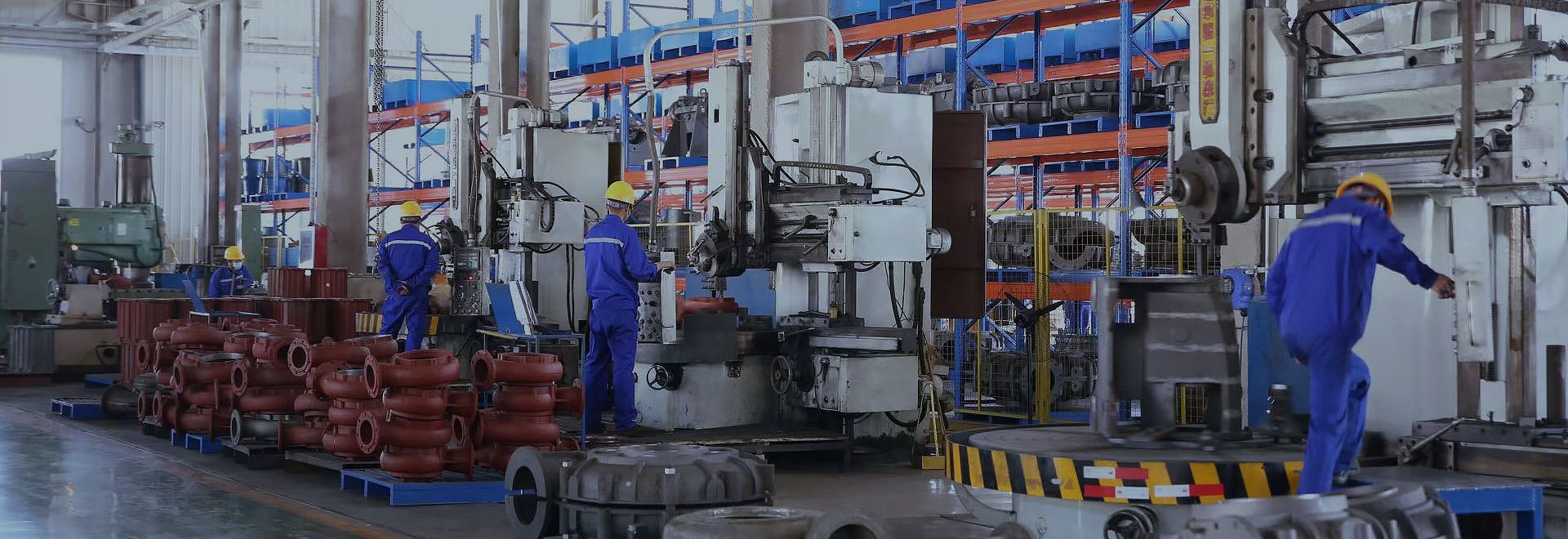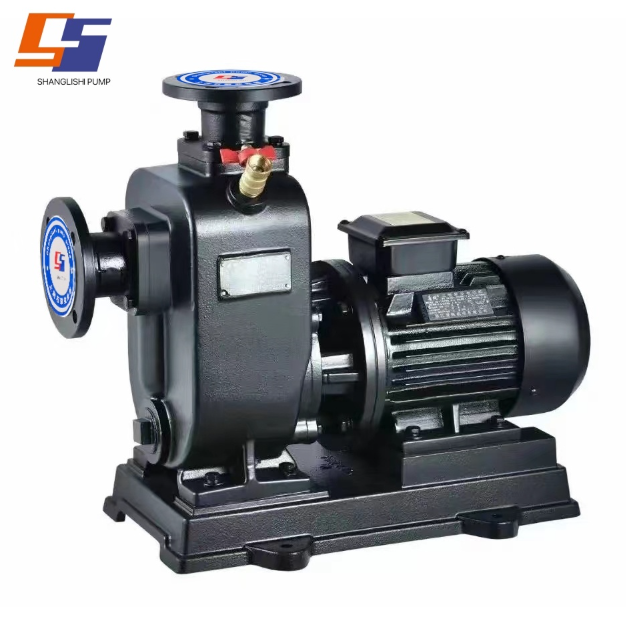Self-Priming vs. Non-Self-Priming Pumps: Which Is Right for You?
Published:
Feb 27,2025
When choosing a pump for your industrial, commercial, or residential needs, one of the critical decisions is whether to use a self-priming or non-self-priming pump. The right choice depends on the specific application, the type of fluid being pumped, and the installation setup.

When choosing a pump for your industrial, commercial, or residential needs, one of the critical decisions is whether to use a self-priming or non-self-priming pump. The right choice depends on the specific application, the type of fluid being pumped, and the installation setup. In this article, we’ll explore the differences between these two types of pumps, their pros and cons, and how to determine which is the right option for your system.
1. What is a Self-Priming Pump?
A self-priming pump is a type of pump designed to automatically remove air from the suction line and create the necessary vacuum to draw liquid into the pump and start its operation. It can effectively "prime" itself without the need for external assistance, making it especially useful in applications where the liquid may be exposed to air or the pump may need to be primed frequently.
How It Works:
Self-priming pumps use an integrated mechanism (often a check valve or air chamber) that traps and compresses air inside the pump casing during startup. This air is then evacuated, and the liquid can flow into the pump. Once the liquid fills the pump, it begins pumping as expected.
Key Features:
Ability to Prime Itself: Self-priming pumps are capable of handling air that might be present in the liquid line.
Versatility: Can handle fluids with a certain amount of air or vapor.
Start-Up Flexibility: No need to manually fill the pump casing with liquid before startup (as required in non-self-priming pumps).
Applications:
Wastewater Treatment: Self-priming pumps are commonly used in wastewater systems where air can be mixed with the liquid due to the nature of the liquids being pumped.
Construction Sites: They are ideal for pumping slurry, sand, or other semi-solid mixtures that might contain air pockets.
Sump Pumps: Used in situations where water might periodically lose contact with the pump, such as in a dry sump system.
2. What is a Non-Self-Priming Pump?
A non-self-priming pump is a traditional type of pump that requires the casing and suction line to be filled with liquid before starting. These pumps cannot create their own vacuum to remove air from the suction side, so they rely on the liquid being present to start operation.
How It Works:
Non-self-priming pumps need to be manually primed (i.e., filled with liquid) before they can start pumping. This is necessary because the pump will not function properly if there is air or vapor trapped in the suction line. The system must be designed to ensure that the pump’s casing and suction side are always filled with liquid.
Key Features:
No Air Handling: These pumps are generally not designed to handle air or vapor in the suction line.
Manual Priming Required: The pump must be manually primed before it can begin operating.
Reliability: Non-self-priming pumps are often more reliable in applications where air is not present and the liquid is always available for pumping.
Applications:
Chemical Processing: Non-self-priming pumps are frequently used in chemical processing, where the system is designed to always have liquid in the lines.
Food and Beverage: In industries where consistent liquid flow and contamination-free pumping are required, non-self-priming pumps can be ideal.
Hydraulic Systems: For systems where a continuous liquid supply is maintained and air isn’t a factor.
3. Comparison: Self-Priming vs. Non-Self-Priming Pumps
| Feature | Self-Priming Pumps | Non-Self-Priming Pumps |
| Priming Method | Automatically primes itself, no need for manual filling | Requires manual priming or constant liquid supply |
| Air Handling | Can handle air or vapor in the suction line | Cannot handle air in the suction line |
| Maintenance | Slightly more complex, may require more maintenance | Generally simpler and easier to maintain |
| Cost | More expensive due to additional features | Generally cheaper |
| Energy Efficiency | Less efficient compared to non-self-priming pumps | More energy-efficient due to simpler design |
| Common Applications | Wastewater, construction sites, slurry, sump pumps | Chemical processing, food and beverage, hydraulic systems |
| Durability | Suitable for environments where air may be present in the fluid | Best for clean, continuous flow systems |
4. Advantages and Disadvantages of Self-Priming Pumps
Advantages:
Convenience: No need for manual priming or filling before use.
Flexibility: Capable of handling air or vapor in the fluid being pumped, making them ideal for applications like dewatering, sewage, and slurry pumping.
Time-Saving: Reduces the need for regular maintenance of priming procedures, especially in cases where the pump may run dry for short periods.
Disadvantages:
Complexity: Self-priming pumps are more mechanically complex and may require additional maintenance to keep the priming system functioning properly.
Cost: Typically, self-priming pumps are more expensive than their non-self-priming counterparts due to the added technology and features.
Energy Use: They can be less energy-efficient compared to non-self-priming pumps, as they often require additional power to operate the priming mechanism.
5. Advantages and Disadvantages of Non-Self-Priming Pumps
Advantages:
Simplicity: Non-self-priming pumps have a simpler design, with fewer components that can wear out, which often makes them more reliable.
Cost-Effective: They tend to be less expensive due to the simpler design and fewer moving parts.
Energy Efficiency: Because there is no priming mechanism, they often require less power to operate, making them more energy-efficient in many applications.
Disadvantages:
Manual Priming: These pumps require the suction line to be filled with liquid before starting, which can be inconvenient if the liquid is inaccessible or if air becomes trapped in the system.
Not Suitable for Air Handling: If there is air in the suction line or if the pump runs dry, it will not function properly and could damage the pump.
Limited Applications: Best for situations where there is always a constant supply of liquid and air is not present.
6. Which Pump is Right for You?
The decision between a self-priming and a non-self-priming pump depends on several factors:
Nature of the Fluid: If the fluid being pumped is likely to contain air or vapor (e.g., wastewater, slurry), a self-priming pump is likely your best choice.
Pump Location: If the pump is in a location where it could run dry or lose its prime (e.g., a sump pump in a basement), a self-priming pump is more advantageous.
Maintenance and Simplicity: If you want a simple, low-maintenance pump and are working with clean liquids in a closed system, a non-self-priming pump could be ideal.
Budget: Self-priming pumps tend to be more expensive, so if you have a limited budget and your application allows it, a non-self-priming pump might be the best choice.
Conclusion
Both self-priming and non-self-priming pumps have their place in different industries and applications. Self-priming pumps are versatile and ideal for situations where air in the suction line is a concern, while non-self-priming pumps offer a simpler, more cost-effective solution for applications where the liquid is always available and air handling isn’t required.
Assessing your specific needs, including the type of fluid, the application environment, maintenance requirements, and budget, will help you make the right choice between these two types of pumps.
Keyword:
SHANGLISHI PUMP GROUP
Department Director: Ms. Wang
Tel: +86-311-82725800/82725629
Email: admin@sls-pump.com
WhatsApp: +86 15830676372
Mobile Website

Mobile Website
Copyright © 2022 SHANGLISHI PUMP GROUP



